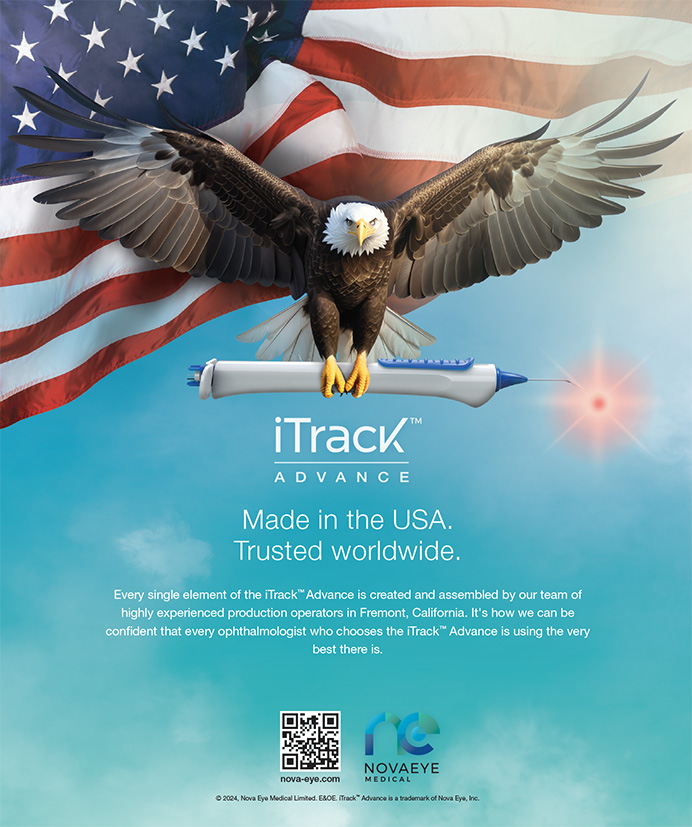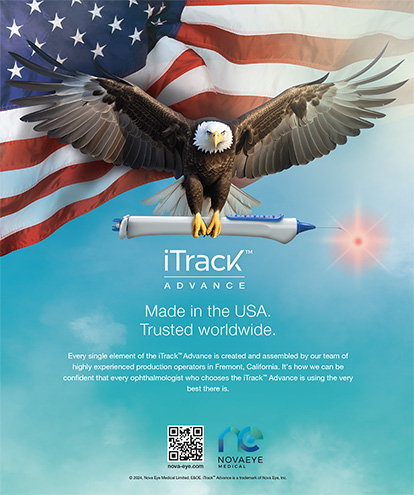I have enjoyed these challenges, because they are positive and reinvigorating. UC Irvine is a phenomenal institution committed to building its ophthalmology department. Refractive surgery, cataract surgery and its complications, and the cornea all receive emphasis. Also, my years on the ASCRS Executive Committee have heightened my awareness of the political and socioeconomic challenges to our specialty, and this experience has provided countless opportunities for me to interact with other leaders in ophthalmology. Therefore, the two activities are quite complementary.
What motivated you to become politically active on behalf of your profession? The two principal activities of the ASCRS are education and politics, with the mission of improving the quality of eye care. One of my greatest professional pleasures is teaching. My roles in the ASCRS initially grew out of this passion. My political activity arose out of the necessity to protect and support physicians' ability to advance quality patient care. The need for political activism has never been clearer or more urgent than now. The ASCRS provides an opportunity for all ophthalmologists to participate, and I hope that they will become involved.
What issues at the forefront of ophthalmology do you intend to address during your term as ASCRS President? The theme for this year, as I enter into my term, is inclusion. The Executive Committee met and thoroughly examined the ASCRS' resources and goals. The strongest consensus was that we needed to be more creative than ever in meeting the needs of our members and reaching out to ophthalmologists who are not yet members. A number of task forces have worked through the fall and winter to develop strategies to implement that goal. We are setting specific programs in place to recruit and retain members, and we are examining our methods for expanding how we fulfill our primary mission of education. The annual meeting, the Journal of Cataract and Refractive Surgery, and Eyeworld remain the society's major vehicles for education, and we are continuing to refine them to maximize their educational value. Feedback from our members is critical. Beyond that, we are prioritizing the development of alternative forms of education that will better meet the needs of members who cannot afford the time or expense of attending the annual meeting or who prefer receiving educational information in nonprint formats. In addition, we will work aggressively in the political arena on current hot issues such as the scope of surgical practice, tort reform, and fair reimbursement.
As the holder of both US and international patents for ophthalmic instruments, what are your feelings on the relationship between industry and ophthalmologists? Younger ophthalmologists may not know that the ASCRS was founded to meet the specific need of creating a single strong voice for promoting and developing the implantation of IOLs for cataract surgery. The founding members mobilized to prevent a ban on IOL implantation in the US and to build alliances with industry to continually improve the techniques and technology of cataract surgery. Surgeons and industry share parallel if not identical goals. By maintaining our scientific integrity, we can advance our profession through an alliance with manufacturers. The rapid and enormous progress in cataract surgery during the past 30 years, and the development of the entire field of refractive surgery in less than 20 years, are compelling evidence of the value of our collaboration with industry.
Where are therapeutic retreatments heading in the future? The great advancements in primary refractive surgery, particularly wavefront technology, will help address the larger challenges of therapeutic enhancements for the small number of unhappy refractive surgery patients. They also have therapeutic optical applications such as treatment after corneal transplantation or trauma. My group and others are working toward making the technology of corneal topography, wavefront analysis, and laser ablation sufficiently robust so we can confidently apply laser ablation therapeutically. We are also using femtosecond laser technology to perform a better initial keratoplasty, whether it be penetrating or lamellar. n


